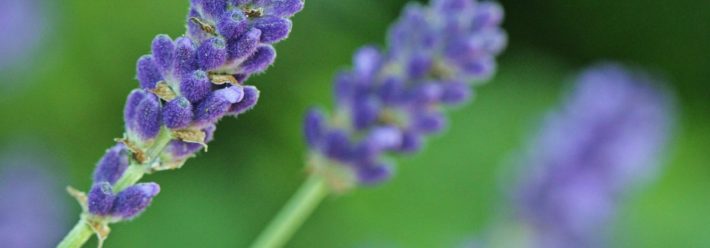If you’re looking for a way to help manage the symptoms of an ailment you’ve been struggling with, or if you’re simply interested in natural ways to promote wellness, prescription and over-the-counter medications aren’t the only options available. For millennia, people have turned to holistic remedies, including medicinal herbs.
You can grow your own herbs as a low-effort source of holistic wellness aids. There are countless species that have been touted as beneficial for all manner of afflictions for thousands of years. Of course, herbs and medicinal plants are also beautiful to look at, and many have a pleasant smell.
Keep in mind, however, that the scientific research on the effectiveness of these herbs is spotty and inconclusive—and in some cases, nonexistent. Herbs aren’t cure-alls. In addition, always tell your doctor if you decide to take medicinal herbs. Some herbs can cause potentially dangerous reactions when taken with other drugs. Pregnant women and children should not take medicinal herbs.
With these caveats out of the way, let’s take a look at some of the most popular healing herbs.
Calendula (Calendula officinalis)
More commonly referred to as pot marigold, this herb grows year round. The head of its flower boasts bright orange and yellow hues which glow like the rays of the sun. Calendula can be consumed and is routinely mixed into salads or used as a decoration for baked goods.
Beyond that, pot marigold is popularly incorporated into creams, oils, and cosmetics. It’s famous for its natural anti-bacterial and anti-inflammatory properties. People use it to treat conditions such as eczema and acne. It may also help combat varicose veins and conditions like yeast infections. Calendula is useful in the garden, too—it prevents pests such as aphids from preying on the foliage of plants nearby.
Echinacea (Echinacea angustifolia/purpurea)
This prairie flower is most commonly called coneflower. This name stems from its firm stalks and tall frame. Indigenous to North America, echinacea showcases purple and pink flower petals which make a welcome addition to any flowerbed. It’s also resistant to heat and drought, which enables it to thrive in a variety of environments and climates. You can expect to have some level of success growing this herb just about anywhere.
In terms of holistic medicine, echinacea may improve immune function, particularly in the case of infection by microbes. Some people claim it is effective in shortening symptoms of the common cold and the flu. People also use it to treat conditions like vaginitis and respiratory infections. Applied to the skin, it may help prevent infection stemming from cuts and burns.
Sage (Salvia officinalis)
This might be one of the most popular herbs listed here, as its medicinal properties are widely touted, as is its unique scent. Sage plants feature a beautiful green-grey color that contrasts well with the lighter shades of green commonly found in gardens. Gardeners love sage for this reason, and because it can be used in so many recipes.
In addition, sage may be useful in treating symptoms of sore throat. Women undergoing menopause often suffer from hot flashes and consume sage to help limit its impact. It also has a potentially important use for nursing women. Some women report that sage reduces the rate of lactation. Therefore, making a tea out of sage is sometimes thought to help women wean their babies off of milk when they feel the time is right.
St. John’s Wort (Hypericum perforatum)
This herb has cheerful yellow flowers and translucent leaves that allow sunlight to shine through. St. John’s wort is thought to alleviate depression, anxiety, and stress, and is widely used in European holistic medicine. Additionally, some women report that it eases physical symptoms associated with menopause. Research also indicates that St. John’s wort possesses natural anti-microbial characteristics.
Use caution when it comes to this herb, however. Do not consume St. John’s wort if you’re also taking prescription antidepressants, including selective serotonin reuptake inhibitors (SSRIs, a class of drugs commonly prescribed for depression.) You’ll also want to avoid combining St. John’s wort with aged cheeses, sauerkraut, beer, wine, and other sources of the chemical tyramine. Tyramine and St. John’s wort together can result in high blood pressure and fast heart rate.
Lavender (Lavandula angustifolia)
This perennial plant is simple to grow and looks lovely along the border of your flowerbed or along a garden path where people can appreciate its distinct, heady aroma and subtle purple flowers. Lavender’s smell derives from the natural oils it contains, and its smell alone is often said to make people feel relaxed and calm. Lavender essential oils are commonly used in aromatherapy for this reason. It’s easy to make your own lavender oil or tincture at home; you can find directions several places online, like these instructions from HGTV. You can also simply dry lavender and crush it to make a calming, pleasantly scented sachet.
